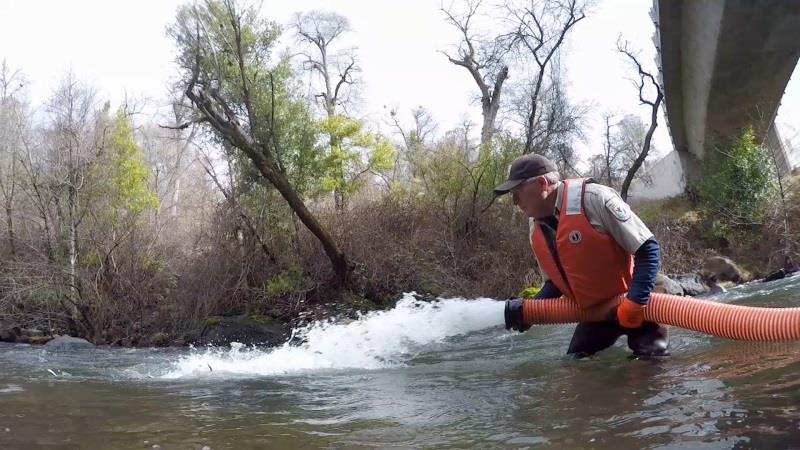
Reintroductions: A lifeline for salmon in California's Central Valley
by NOAA Fisheries 1 May 2023 15:57 UTC

A U.S. Fish and Wildlife employee reintroduces salmon into a Central Valley river © NOAA Fisheries
Before the Gold Rush, somewhere between 1 and 2 million salmon a year came up Central Valley rivers.
Following the Gold Rush and throughout the 1900s, dams and other water diversions for human development have blocked access for salmon to more than 95 perent of their high-elevation spawning and rearing habitat. This habitat is so important because of the cold, fresh water that Chinook salmon and steelhead need to reproduce, and for juveniles to grow in before migrating to the ocean.
Right now in California, many salmon fisheries in the Central Valley are stuck down on the valley floor where river waters are warm—too warm for salmon eggs to survive. As our climate is getting hotter and dryer more persistently, reintroduction into their historical habitat above dams—including healthy flows and cold water—is a viable method to increase their populations. We work with partners, including the California Department of Fish and Wildlife and the Winnemem Wintu Tribe, to re-establish access to these upstream habitats and reintroduce salmon to inaccessible habitat above large dams.